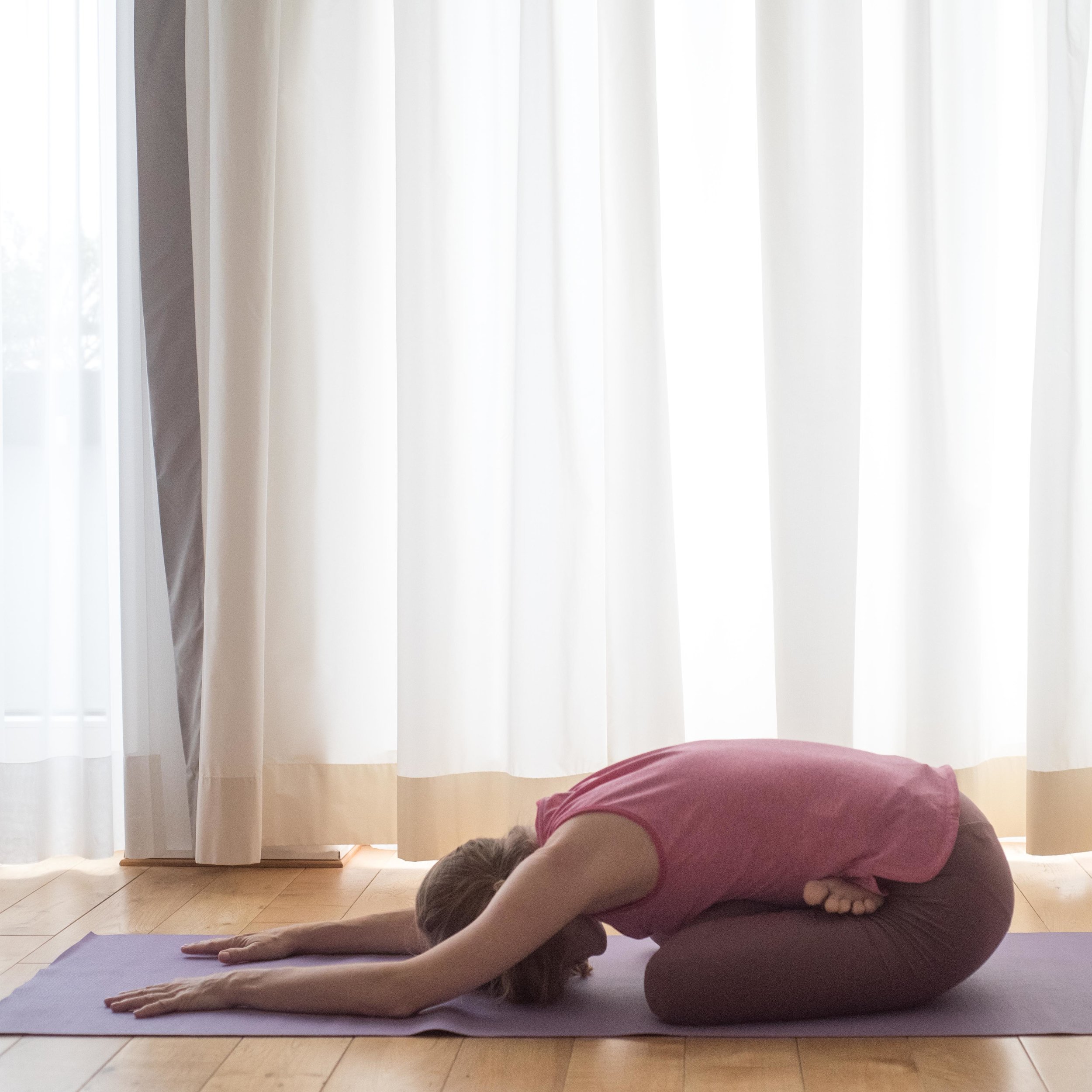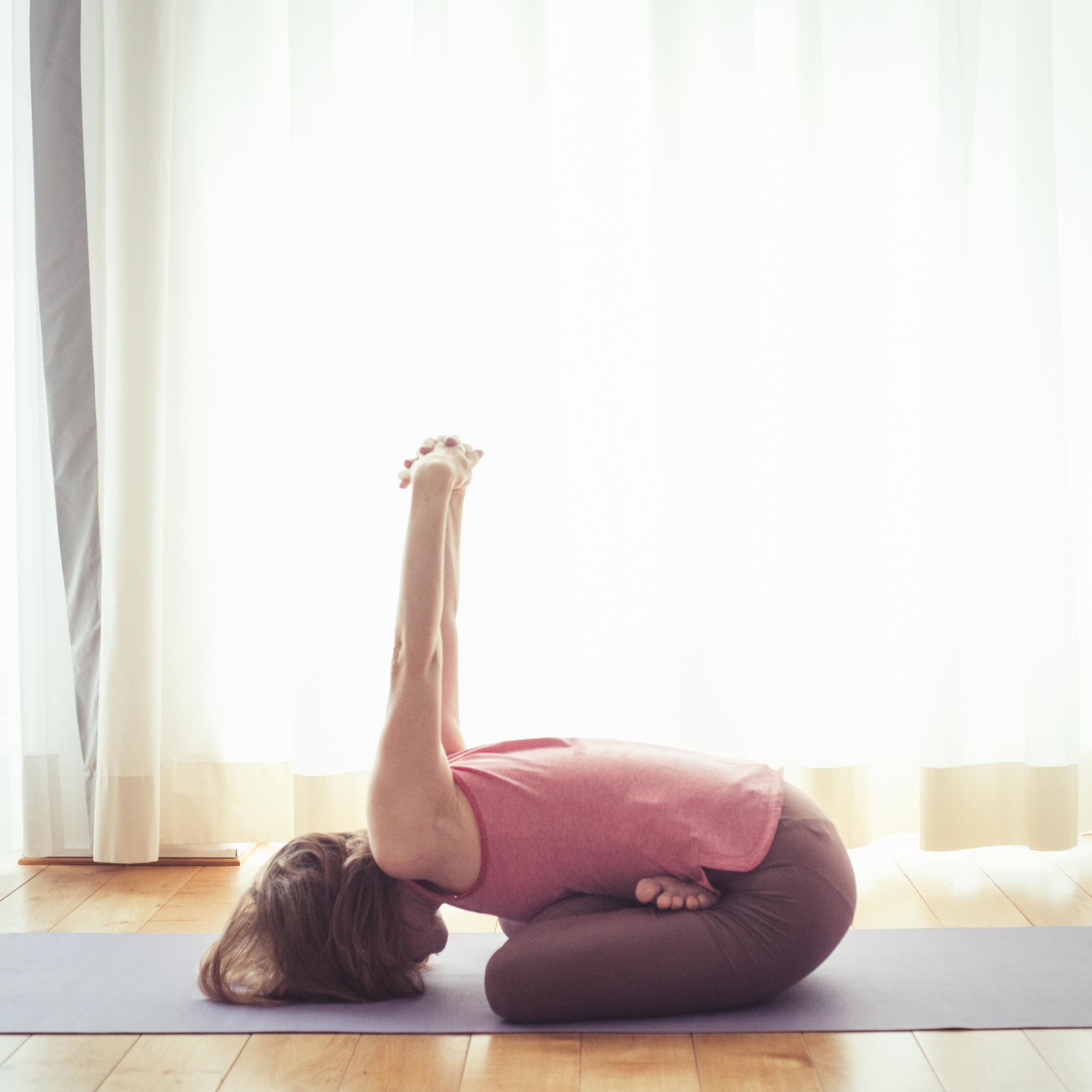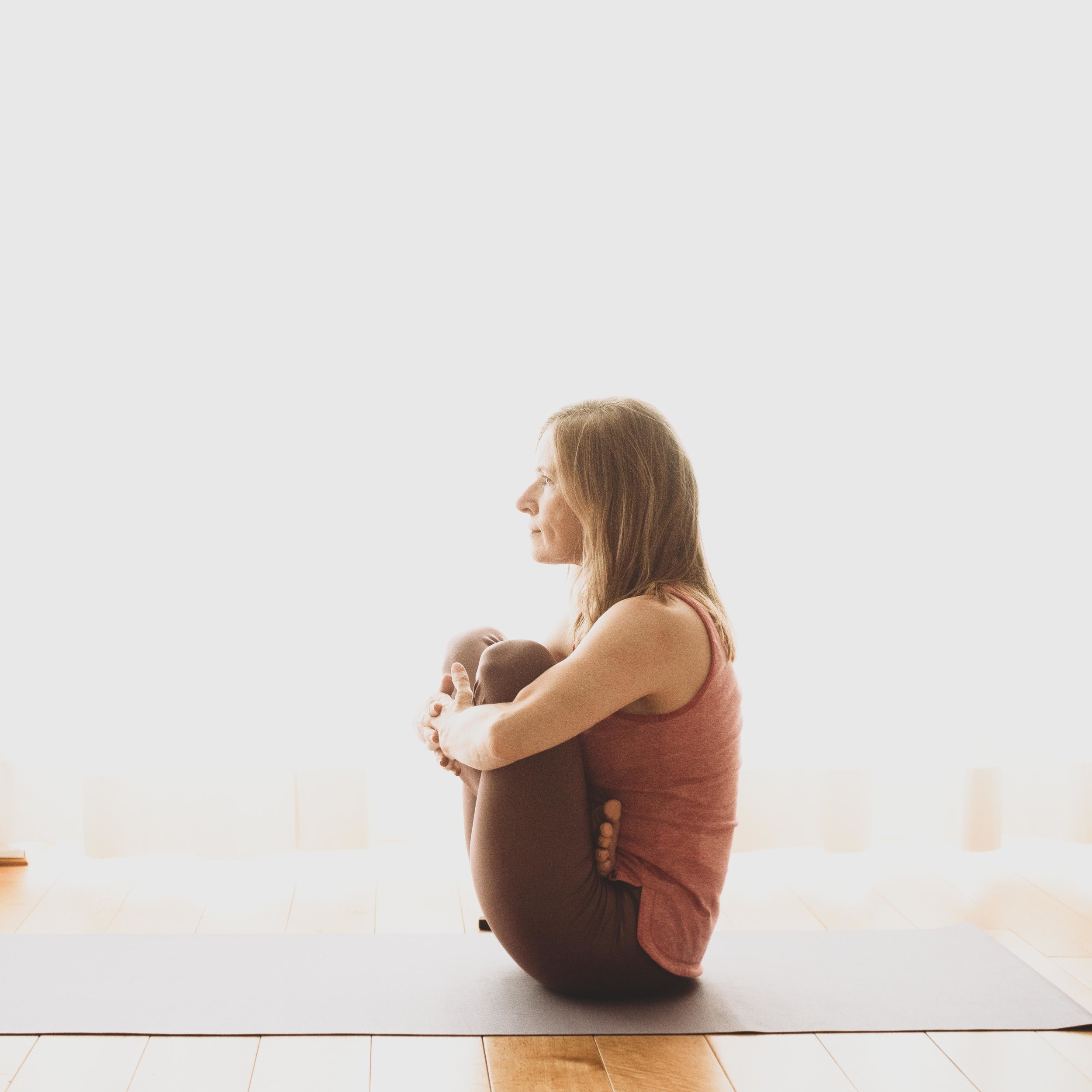Padmasana variations
Quick summary:
Half lotus pose gets introduced in the standing asanas (ardha baddha padmottanasana). In the middle part of primary come 2 poses with full lotus pose. Garbha pindasana has a dynamic phase and a static phase. The pose ends with Kukkutasana which has also a balancing aspect.
My topic these days is didactic. How can I learn an asana faster and safer. What are the tiny steps towards the end form. Do I need more flexibility or strength? Have I understood the technique to perform an asana? These are the questions. It makes sense to move from easier variations to more difficult ones. Easier variations always exist. Another reason for knowing easier variations is that it can happen that an asana is no more possible because of injuries. Instead of omitting an important asana, easier variation can do the job.
First I analyse the asana: Garbha pindasana requires to do lotus pose. It’s also a forward bending asana.
This is exactly what I did. I put my legs in lotus pose and bent forward. Gravity helps. When bending forward it’s important to stretch first. It helps to create length. The movement starts from the hips.
The second variations uses the arms as a leverage. This pose should be applied with much care. The shoulders are very sensitive joints.
The third variation is usually recommended in classes as an interim step toward garbha pindasana. It has a balancing aspect. In order to hold the pose it’s good advice to engage the hip muscles. The arms shall not do all the work.
The forth pictures is the most relaxing one. Lying on the back is always relaxing. With the arms one can support the movement. Finally a pose shall feel good.
Experimenting with variations deepens the understanding of the asanas.
It’s Tuesday today. I focus on back bending.



